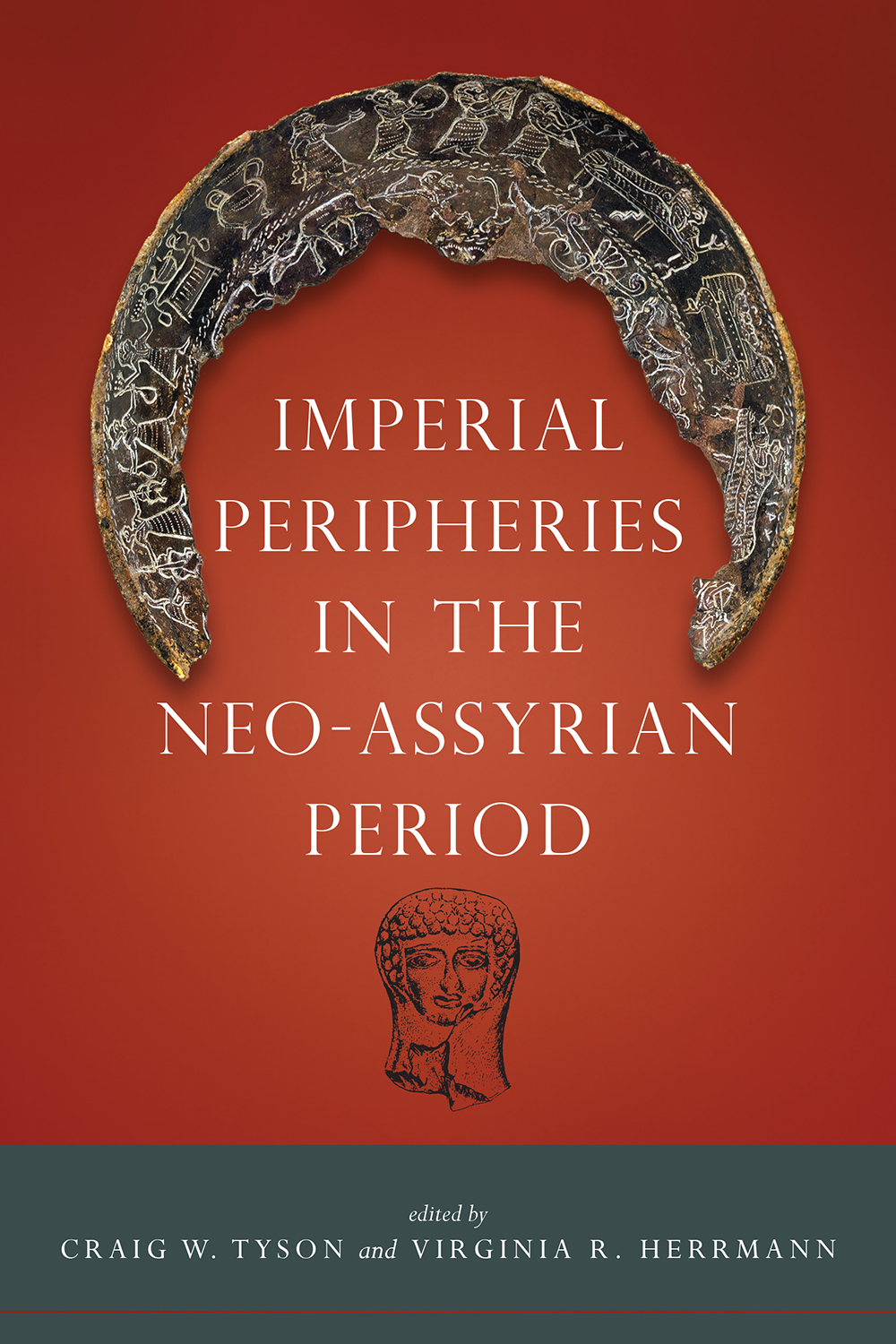
Imperial Peripheries in the Neo-Assyrian Period
Edited by
Craig W. Tyson and Virginia R. Herrmann
University Press of Colorado
Louisville
2018 by University Press of Colorado
Published by University Press of Colorado
245 Century Circle, Suite 202
Louisville, Colorado 80027
All rights reserved
 The University Press of Colorado is a proud member of the Association of University Presses.
The University Press of Colorado is a proud member of the Association of University Presses.
The University Press of Colorado is a cooperative publishing enterprise supported, in part, by Adams State University, Colorado State University, Fort Lewis College, Metropolitan State University of Denver, Regis University, University of Colorado, University of Northern Colorado, Utah State University, and Western State Colorado University.
ISBN: 978-1-60732-822-3 (cloth)
ISBN: 978-1-60732-823-0 (ebook)
DOI: https://doi.org/10.5876/9781607328230
Library of Congress Cataloging-in-Publication Data
Names: Tyson, Craig W. (Craig William), 1976 editor. | Herrmann, Virginia Rimmer, editor.
Title: Imperial peripheries in the Neo-Assyrian period / edited by Craig W. Tyson, Virginia R. Herrmann.
Description: Boulder : University Press of Colorado, [2018] | Includes bibliographical references and index.
Identifiers: LCCN 2018034661| ISBN 9781607328223 (cloth) | ISBN 9781607328230 (ebook)
Subjects: LCSH: AssyriaPolitics and government. | ImperialismHistoryTo 1500. | AssyriaHistory. | AssyriaAntiquities.
Classification: LCC DS73.7 .I47 2018 | DDC 935/.03dc23
LC record available at https://lccn.loc.gov/2018034661
Cover illustrations: courtesy, Metropolitan Museum of Art, New York City, 74.51.4557 (front, top); courtesy, Hebrew University of Jerusalem (front, bottom); Metropolitan Museum of Art (back).
In Memory of Bradley J. Parker
A rare and enthusiastic scholar equally at home in Old and New World Archaeology
Contents
Virginia R. Herrmann (Universitt Tbingen) and Craig W. Tyson (DYouville College)
Bleda S. Dring (Leiden University)
Guido Guarducci (CAMNES; University of Reading)
Avraham Faust (Bar-Ilan University)
Erin Darby (University of Tennessee)
Stephanie H. Brown (University of California, Berkeley)
Craig W. Tyson (DYouville College)
Megan Cifarelli (Manhattanville College)
Anna Cannav (CNRS, UMR 5189 HiSoMA, MOM, Lyon)
Bradley J. Parker (University of Utah)
MapExpansion of the Neo-Assyrian Empire
Juxtaposition of the extent of the Assyrian Empire in the Middle Assyrian Period and the early part of the Neo-Assyrian Period
Late Bronze Age occupation at Tell Sabi Abyad in level 6A
Map of the Middle Assyrian Empire with various repertoires of rule used by Assyria indicated
Upper Tigris Borderland with main Iron Age sites and modern cities indicated
Diagram of pottery productions and influence dynamics within the Upper Tigris Borderland
The Middle Assyrian network-empire and its settlement types and the Neo-Assyrian territorial empire and its main contexts
Upper Tigris River Valley settlement increase from the Early Iron Age to the Middle Iron Age
Middle and Late Assyrian number of sites recorded from selected survey areas
Map of sites mentioned in the text
Assyrian destruction layer at Tel Eton
Integrated economic system of the south in the seventh century BCE
Beit Aryeh
Distribution of olive oil production centers in time and space
Molded head figurine from the City of David
Pinched head figurine from the City of David
JPF body from the City of David
Map of southern Jordan and the Negev in the Iron Age
Excavated areas at Busayra
Oakeshotts Bowl K
Buildings DD001 and DD002
Storage vessels from Busayra
Cooking vessels from Busayra
Serving vessels from Busayra
Percentage of vessel types from Buildings DD001 and DD002 by function
Frequency of painted and fine-ware sherds from Buildings DD001 and DD002
Frequency of Imitation Assyrian Palace Ware
Map of Ammon
Increase in number of identified sites from the Late Bronze Age/Iron Age I transition through Iron Age IIC
Assyrian-style pottery from Ammon
Seal illustrating Mesopotamian-style iconography with an Ammonite inscription: Belonging to Shubel
Relief from Rujm al-Kursi showing local adaptation of the standard of Sn of Harran
Statue of Yaraazar illustrating a mix of iconographic styles
Excavation photograph of Period IVb destruction in Temple BBII
Hasanlu citadel, Period IVb
Contour plan of Hasanlu, Iran, with burial excavations in the northeast quadrant
Excavation drawing Burial SK493a, young male
Map of the region
Excavation photograph of the Gold Bowl
Excavation photograph of the Silver Beaker
Copper alloy belt from Burial SK493
Sargon II stele from Larnaca, 707 BCE , with a detail of the left side
Lul of Tyre escaping the Assyrians, 701 BCE
Esarhaddon prism from Nineveh, 673 BCE
Map of Cyprus, showing the main Archaic and Classical centers
Map of Cyprus, showing the area of cultural influence of each kingdom according to terracotta stylistic analysis
Silver bowl with incised decoration and Cypro-Syllabic inscription, said to be from Kourion, late eighthseventh centuries BCE
Limestone colossal head from Golgoi, late seventhsixth centuries BCE
Phoenician dedication to Baal of Lebanon by the skn of Qarthadasht, found in Cyprus, 739730 BCE
Overview of hardware type repertoires of rule in the Middle and Neo-Assyrian Empires
Overview of software type repertoires of rule in the Middle and Neo-Assyrian Empires
Transjordanian chronology
Cypriot chronology
Cypriot kings named in the parallel lists of Esarhaddon (673672 BCE ) and Ashurbanipal (after 664 BCE )
Our interest in the peripheries of the Neo-Assyrian Empire stems from research on two regions that had sustained interactions with Assyrian power. In Craigs case it is the area around Amman, Jordan, that was home to the ancient Ammonites. In Virginias case it is the site of Zincirli in southern Turkey. In both cases our studies led us to consider carefully the interactions between empires and the smaller societies surrounding them. This shared interest was what led us to organize sessions on imperial peripheries at three consecutive annual meetings of the American Schools of Oriental Research (201113). A core group of scholars from those sessions joined us in proposing this volume, and we brought together several others to broaden its geographical scope. The resulting volume brings together eleven scholars from five countries to reconsider and reconceive interactions between the Neo-Assyrian Empire and its peripheries.
We would like to thank Darrin Pratt, director of the University Press of Colorado, for his initial idea for the book, as well as Jessica dArbonne (former acquisitions editor) and the rest of the University Press of Colorado staff for shepherding us through the process of producing this book. Our thanks to three anonymous reviewers whose comments and critiques strengthened many of the books chapters as well as the overall clarity. We would also like to thank our contributors, who have been responsive to our feedback and requests. It has been a pleasure to work with all of you.
Next page

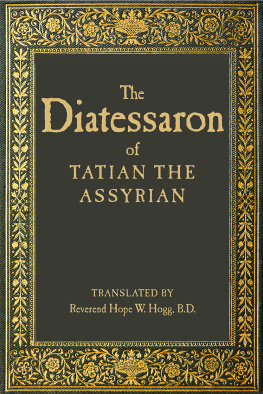
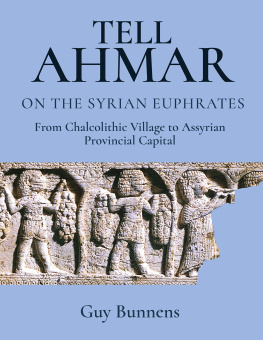

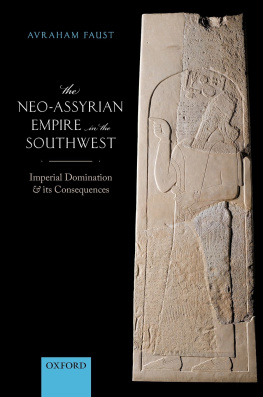
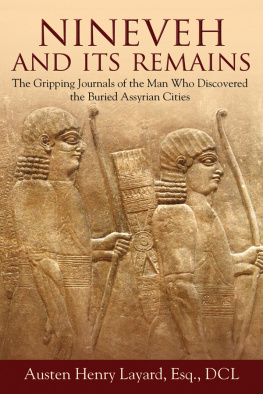
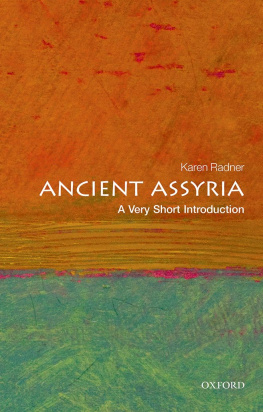
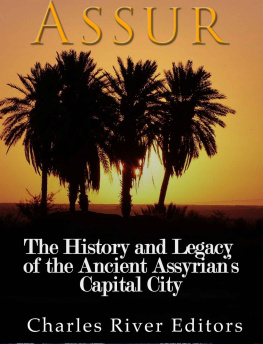

 The University Press of Colorado is a proud member of the Association of University Presses.
The University Press of Colorado is a proud member of the Association of University Presses.